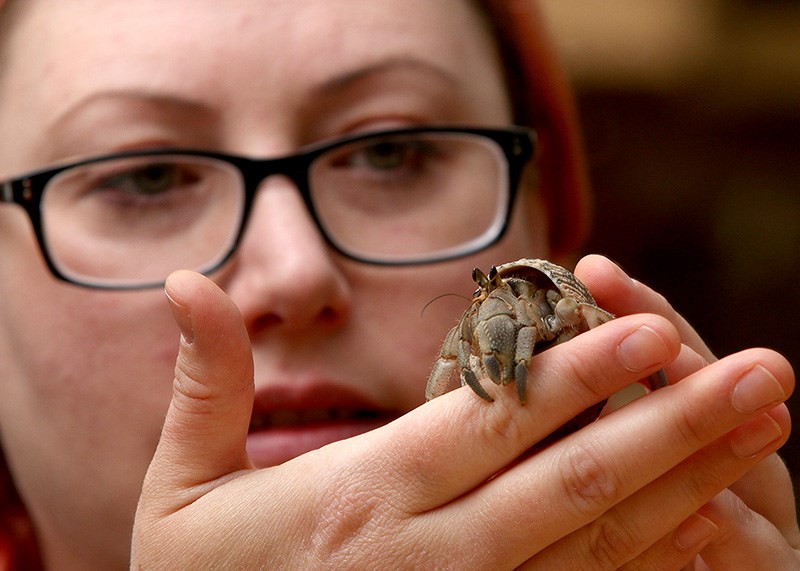Amber Miner says it was a soft spot for the underdog that led her to start adopting little crabs that seek safety in hard shells.
Six years later, she has 35 hermit crabs of varying sizes living, noshing on a smorgasbord of tasty treats and burrowing in several inches of sand in two large aquarium tanks in her Port Moody home.
Many came into her care because their previous owners didn’t know what to do with them. And she hopes her efforts to educate will improve their lot in life as she adopts them out to new owners.
Miner said she felt sorry for the little creatures that are native to warm climes like the Bahamas, Florida, South America, Indonesia and Thailand but were being sold by local pet stores as a kids’ curiosity. She said a lack of knowledge for their proper care meant they were likely doomed to a short, unhappy life scrabbling around a thin layer of gravel in a small, plastic enclosure.
Miner said with a good variety of food to eat, several inches of sand in which to burrow, hiding places to get some refuge, access to fresh and sea water, as well as natural shells of varying sizes in which they can make a home, hermit crabs can live up to 40 years.
Miner said initially, caring for hermit crabs can be a lot of work, and that begins with providing them a large enough home.
She said hermit crabs in the wild can walk up to 10 miles a day in search of food, so one of her tanks is a four-foot-long, 135-gallon behemoth while the other is 55 gallons. In them, she has simulated the crabs’ natural environment as best she can, starting with a thick substrate of sand and coconut fibre that’s about half the tanks’ height.
Miner said because the crabs have no shell of their own and live in abandoned shells they find lying about, they have to bury themselves into the moist sand to keep from drying out when they’re moulting. She keeps a stockpile of natural shells of varying sizes that she orders from the Philippines, but even then, the industrious little crabs will chip and chew away at them to customize their fit.
Miner has also equipped her tanks with little ponds of burbling sea and fresh water, as well as all manner of artificial and natural biota, including plastic plants, rocks, logs and empty barnacles that the crabs can use as refuge.
She said she gleaned most of her knowledge about caring for hermit crabs from the internet— one site is crabstreetjournal.org — as well as several Facebook groups for crab enthusiasts.
To feed her brood, Miner stocks their own pantry with jars and containers filled with animal protein, sea vegetables like seaweed, nuts, grains, fruit, vegetables such as corn niblets, flower petals and even worm castings. She said the crabs like to eat a variety, so they get a daily buffet from which they’re free to graze.
Miner said the payoff for her efforts is watching the unique personalties of each crab and how they interact; some are social, some are loners, some will respond to her presence while some will stay hidden until dark.
“They’re like my television,” Miner said of her two tanks, adding that while she doesn’t object to hermit crabs being sold as pets, she does try to educate shopkeepers and prospective owners about their proper care.



